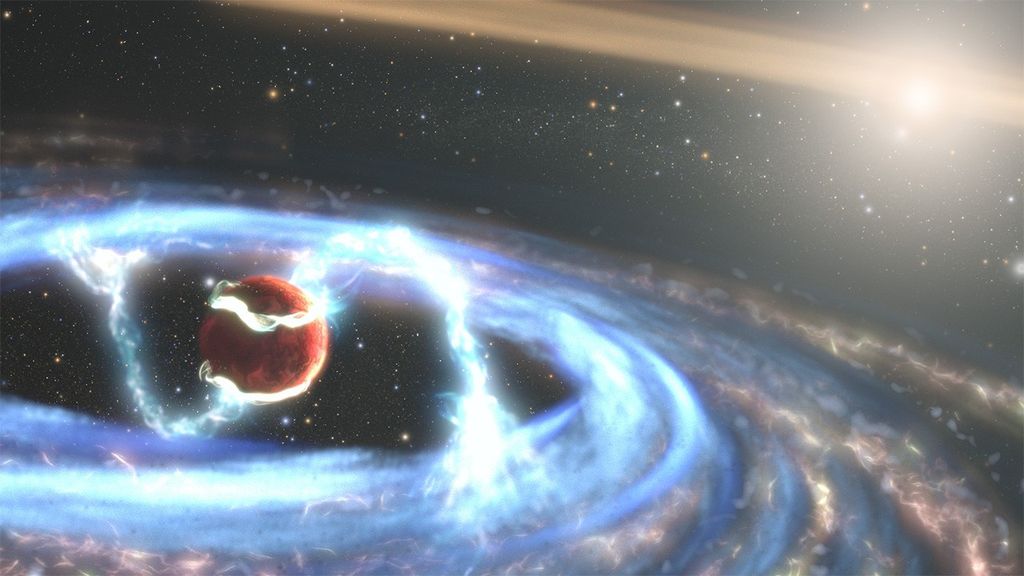Throughout Cassini's nearly 20-year mission, the flight team on Earth has transmitted between four and 10 weeks of commands to the spacecraft at a time. This transmission on April 11, 2017, was special. The team sent one of the final command sequences, which will control Cassini while it flies toward and eventually through the gap between Saturn's innermost ring and the planet itself. These orbits are known as Cassini's Grand Finale, the series of 22 dives through the gap, dipping into Saturn's atmosphere and occasionally through the D ring.
The computer commands were transmitted about 8:30 a.m. PDT (11:30 a.m. EDT) via NASA's Deep Space Network. It takes nearly an hour and a half of light-travel time from Earth for the commands to reach the spacecraft at Saturn. Cassini will now autonomously execute that Grand Finale sequence for the next six weeks. Another command sequence will continue the Grand Finale orbits, which last for five months.
Like all of Cassini's work, this command sequence started with the science. Scientists working with different spacecraft instruments and disciplines met with the flight team to integrate their respective planned observations with one another and with the engineering team. That led to Sequence 99, or S99, the Grand Finale. These final orbits will tell us more about Saturn's structure and its magnetic and gravitational fields. Cassini's instruments will also sample icy ring particles, improving our understanding of the composition and origins of Saturn's rings. Meanwhile its cameras will take amazing images of Saturn's rings and clouds from closer than we've ever been before.
Even though I’ve now done this many times, there’s a little kid inside me that is thinking, 'This is so cool!'- Jo Pitesky, Cassini Flight Team
On Sept. 15, 2017, Cassini's final orbit will send it into the planet. The spacecraft's final images will have been sent to Earth several hours before its final plunge, but even as Cassini makes its fateful dive into the planet's atmosphere, it will be sending home new data in real time. Key measurements will come from its mass spectrometer, which will sample Saturn's atmosphere, telling us about its composition until contact is lost.
How it Feels
Cassini Flight Team member Jo Pitesky describes what it is like to command the spacecraft.
"I've been on Cassini on and off for 13 years. The first time I sent a command to the spacecraft was four or five years ago, which was also the first time that I was responsible for creating and approving the files that get sent up. Having my 'fingerprints' on the actual files made me feel very nervous. Even though everything gets checked by a team, it felt like I was personally responsible for what what happens happen on board."
"Some of that same feeling comes through for me when I send up a command file for a new sequence. If we need to send the file in the middle of the night (unfortunately, we don't always get Deep Space Network time scheduled at convenient hours) we can set up a time-delayed process so that we don't have to get up at 3 a.m., but if the schedule allows, we perform the 'uplink' live, on special monitor phones. It feels both formal and incredibly cool. Formal, because we have a script and a process to make sure that we are sending the right command at the right time. We carefully check the name of the file, the time that the file was created, and other identifiers. Cool, because it sounds like something out a movie. 'Cassini ACE, this is S75 SIP lead on FSO CORD over,' and 'You have a GO for radiation of file zulu 0750 foxtrot.'
Even though I've now done this many times, there's a little kid inside me that is thinking, "This is so cool!'"
Saturn 99 At a Glance
Grand Finale begins: April 26, 2017
Top speed of spacecraft: (relative to Earth): 76,806 mph
Commands executed by Cassini at Saturn: ~2.5 million
One-way transmission time from Earth to Saturn: 80 minutes
Grand Finale orbits: 22 dives between Saturn and its innermost ring
End of mission: Sept. 15, 2017





































